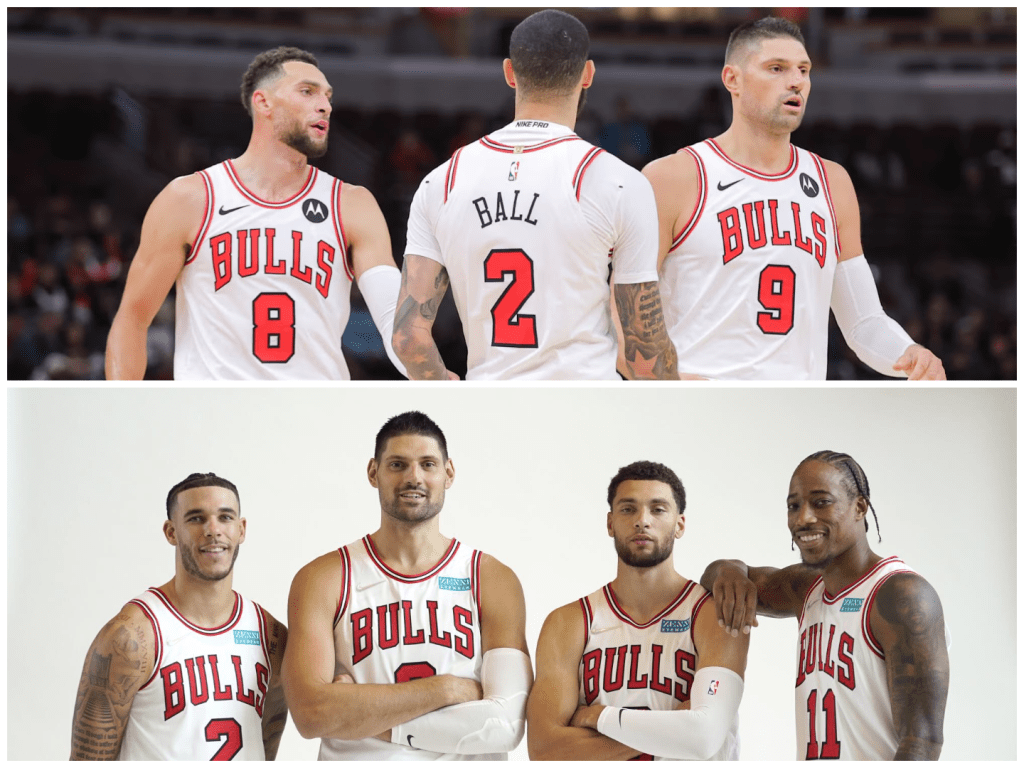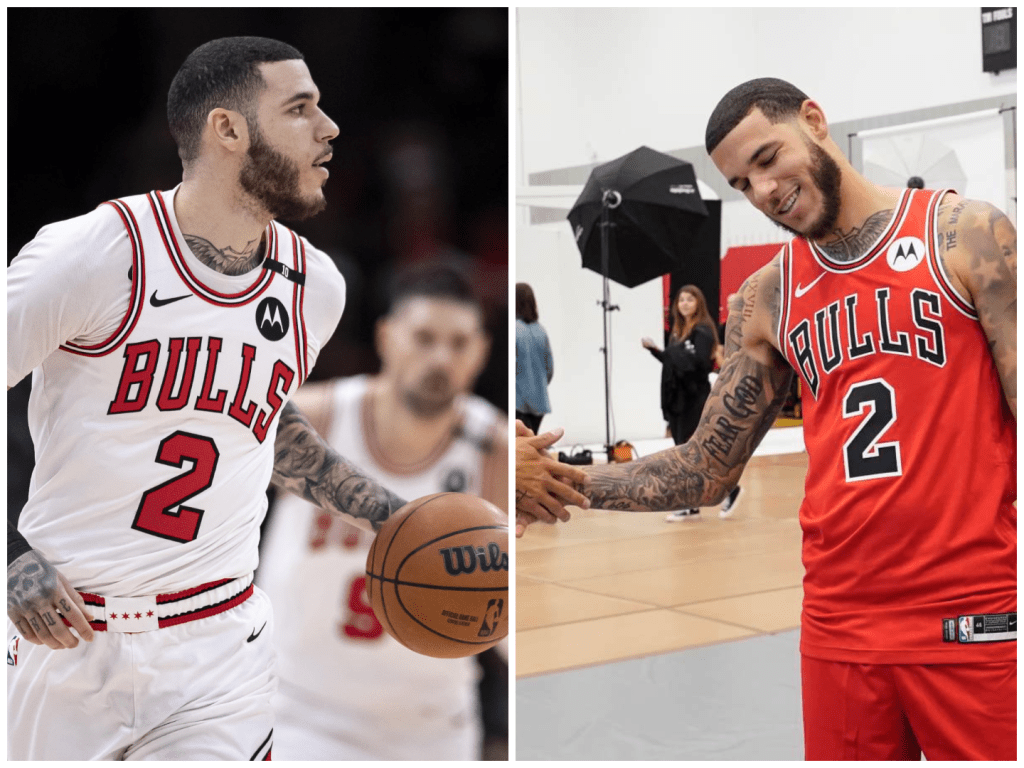the bulls traded this ⬆️ and received this ⬇️

I sat there scrolling through the trade news and paused on that Bulls deal. They sent DeRozan, LaVine, Lonzo, and Caruso—all proven pros—and the return was… their own 2025 first‑round pick and two picks from Sacramento in 2025 and 2028. My jaw dropped. It felt like watching someone give away five cards to get one back, and the pieces are still puzzled. This trade deserves a moment to break down the full story, the emotions behind it, and what it really means for the Bulls and their fans.
When I first heard about DeRozan leaving Chicago, I felt a pang of nostalgia. He’s been a rock—someone Bulls fans leaned on through rebuilding years. Pair him with LaVine’s explosive scoring, Lonzo’s court vision, and Caruso’s energy, and that’s four players who define what Bulls basketball has felt like in recent seasons. Trading all four at once wasn’t just a business decision—it struck a chord in every fan who stayed loyal, season after season. It felt like the team was telling us those memories didn’t matter anymore.
Emotionally, this move whiplashed the fan base. I remember playoff pushes and those highlight reels where LaVine dunked like gravity didn’t apply. I remember the clutch shots from DeRozan when it felt like he carried the team on his back. Lonzo’s sharp passes felt like poetry, and Caruso’s hustle was the fire under those moments. To see them all walk out the door for distant picks? It stings. It’s like a friend moving away, leaving behind stories we shared. And nobody wants to feel like the past wasn’t enough or wasn’t worth defending anymore.

What the Picks Really Mean for Chicago’s Future
On paper, the Bulls got their own first‑round pick in 2025 along with two from Sacramento—another 2025 and a 2028 round pick. That sounds reasonable, but context is everything. A team giving away core contributors should expect a haul that reshapes the future. Here though, the picks are unclear assets, and that’s a gamble of a different kind.
Let me walk it out—Chicago is banking on drafting or trading up in drafts that might have middling talent. Their 2025 pick might be valuable, but if the team struggles, that pick doesn’t add superstar level talent. The Sacramento picks are easier to group with—maybe they’ll yield useful rotation players, but again, will they drive change or simply fill empty spots? Fans get it: rebuilding takes picks. But those pieces need to be more than hopeful futures. They need to remind fans there’s direction.
Also, the flow of emotion is rough. One minute we’re celebrating the good times, the next we’re asked to invest emotionally in players we don’t know yet. Will those picks bring a hometown hero? Or will they arrive quietly and disappear like whispers in free agency? The risk is we’ll lose our connection again. And that matters, because sports loyalty is earned through presence. These picks are promises, but not guarantees.
Heading 3: The Real Cost of Emotional Debt
If I broke down dollars, some will say the trade is about cap space, future flexibility, or timeline adjustments. That’s true. But there’s a human cost—something deeper.
Fans buy jerseys, go to games, paint their faces, and there’s pride in seeing a team build something on the court. We dream on the echoes of buzzer‑beaters and postseason glimpses. DeRozan, LaVine, Lonzo, Caruso—all of them contributed to that energy. They weren’t just names on a roster; they were trust built over dusty wins and late-night heartaches. Chicago just traded away a connection.
Now they’re asking us to pivot to unknown talents in the next drafts. That’s a hard sell when those names feel distant. It’s like moving to a new neighborhood and hoping the house down the road becomes your new favorite hangout without ever visiting. We hope for future bonds, but we also grieve the old ones. This sort of emotional debt doesn’t show up on balance sheets—but it’s real, and it affects attendance, fan morale, and even the vibe around the franchise.
Consider this: players like DeRozan and LaVine didn’t just score—they helped fans believe. They brought hope, especially on nights when few believed. Now, the hope is being redirected toward players we can’t even name yet. That’s a leap of faith bigger than any future asset. And that leap depends on drafting right, developing fast, and fans willing to believe again.

Watching that trade go through hit differently. It wasn’t just another roster move—it felt personal. Like Chicago is clearing the board to start fresh, but what if the new pieces don’t gel? What if the emotional gap leaves the stadium quiet? What if the next iteration doesn’t earn the love as hard or fast?
So yes, they traded “this” and got “that.” But it’s more than contracts and draft positions. It’s a story about loyalty, memory, hope, and whether fans are asked to believe again. The scoreboard will eventually tell us if it was worth it. But in the meantime, there’s a lot left unsaid. And Chicago needs those picks to speak loud, fast, and true—because emotional ROI counts too.